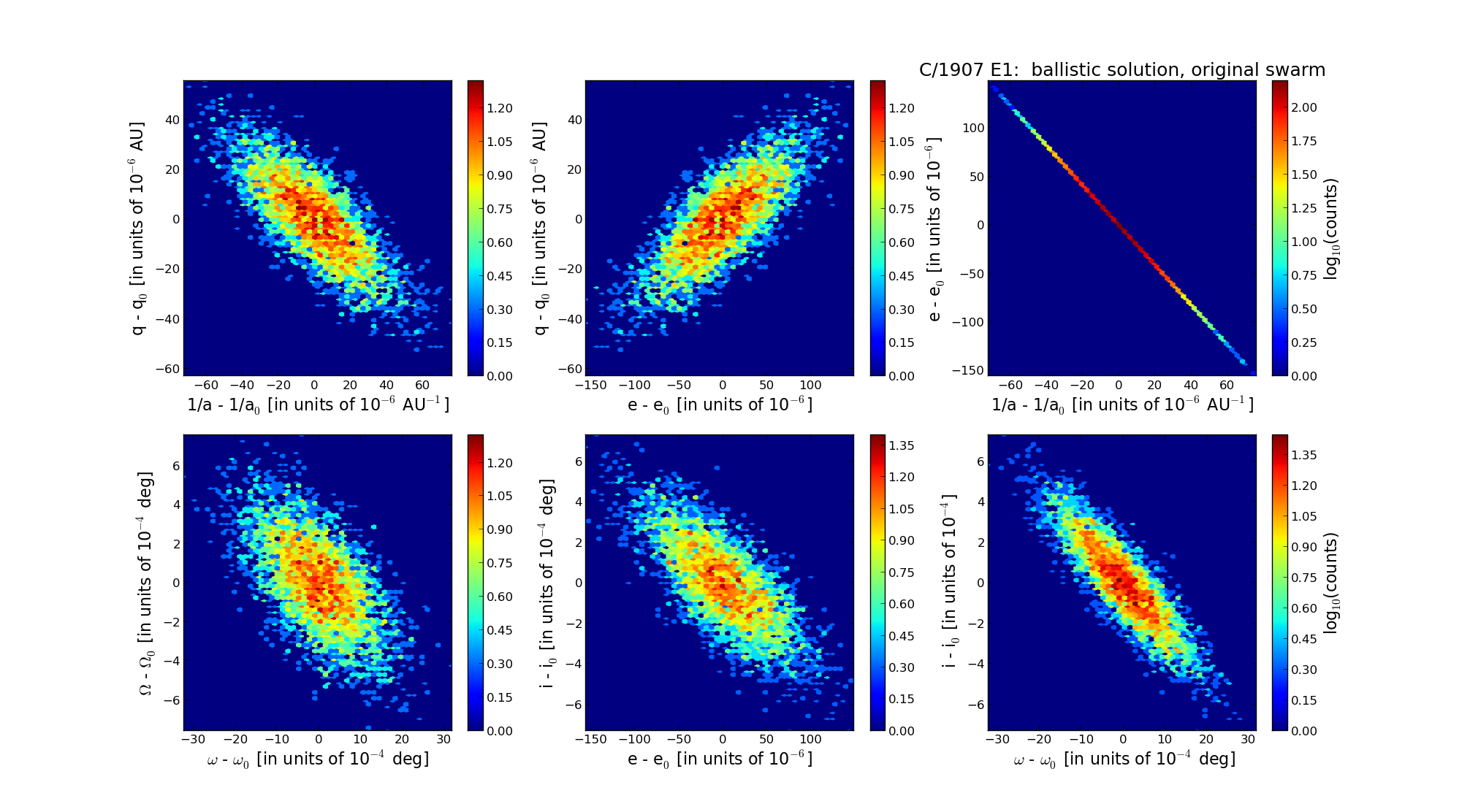C/1907 E1 Giacobini
more info
Comet C/1907 E1 was discovered on 9 March 1907 Michel Giacobini (Nice Observatory, France), that is ten days before its perihelion passage, and it was last seen on 26 February 1908 [Kronk, Cometography: Volume 3].
This comet made its closest approach to the Earth on 22 February 1907 (1.33 au), that is about two weeks before its discovery.
Solution given here is based on data spanning over 0.970 yr in a range of heliocentric distances from 2.055 au through perihelion (2.052 au) to 4.29 au.
This Oort spike comet suffers rather small planetary perturbations during its passage through the planetary system; however, they led to escape the comet from the planetary zone on a hyperbolic orbit (see future barycentric orbit)
This comet was in the original sample of 19 comets used by Oort for his hypothesis on LPCs; however, according to presented here statistics for previous perihelion passage its dynamical status is uncertain.
More details in Królikowska et al. 2014.
This comet made its closest approach to the Earth on 22 February 1907 (1.33 au), that is about two weeks before its discovery.
Solution given here is based on data spanning over 0.970 yr in a range of heliocentric distances from 2.055 au through perihelion (2.052 au) to 4.29 au.
This Oort spike comet suffers rather small planetary perturbations during its passage through the planetary system; however, they led to escape the comet from the planetary zone on a hyperbolic orbit (see future barycentric orbit)
This comet was in the original sample of 19 comets used by Oort for his hypothesis on LPCs; however, according to presented here statistics for previous perihelion passage its dynamical status is uncertain.
More details in Królikowska et al. 2014.
| solution description | ||
|---|---|---|
| number of observations | 178 | |
| data interval | 1907 03 09 – 1908 02 26 | |
| data type | significantly more measurements after perihelion (POST+) | |
| data arc selection | entire data set (STD) | |
| range of heliocentric distances | 2.05 au – 2.05 au (perihelion) – 4.29 au | |
| detectability of NG effects in the comet's motion | NG effects not determinable | |
| type of model of motion | GR - gravitational orbit | |
| data weighting | YES | |
| number of residuals | 296 | |
| RMS [arcseconds] | 2.56 | |
| orbit quality class | 2a | |
| orbital elements (barycentric ecliptic J2000) | ||
|---|---|---|
| Epoch | 1606 10 12 | |
| perihelion date | 1907 03 20.53232672 | ± 0.00152036 |
| perihelion distance [au] | 2.05146625 | ± 0.00001619 |
| eccentricity | 0.99993073 | ± 0.00004422 |
| argument of perihelion [°] | 317.181114 | ± 0.000820 |
| ascending node [°] | 98.439032 | ± 0.000215 |
| inclination [°] | 141.685157 | ± 0.000201 |
| reciprocal semi-major axis [10-6 au-1] | 33.76 | ± 21.55 |
| file containing 5001 VCs swarm |
|---|
| 1907e1a5.bmi |

